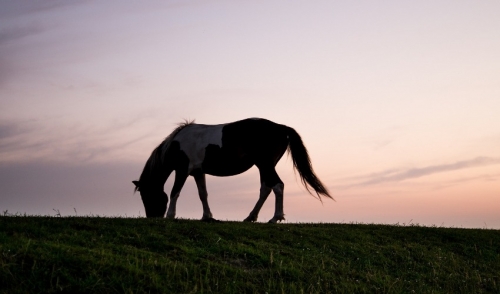
How Climate Change Effects Horses – And How to Tame It
The causes of climate change may be hotly debated, but there's no debate that climate change effects animals, sometimes drastically. Understanding how your horses may be effected by climate shifts can help you be better prepared to keep your horses safe and comfortable in new weather conditions.
What Climate Change Means
Climate change is more than just one hot day or an unusually strong storm, but long-term, consistent alterations of climate patterns – hotter summers, colder winters, more severe storms, more frequent floods, longer droughts, etc. – are indications of overall climate change. Those changes can be very stressful, uncomfortable, and even unhealthy for horses that are adapted to specific climate conditions. As the climate shifts, however, it is possible to make easy changes to help horses adjust.
Climate Change and Your Horses
As weather conditions change, horses can suffer from new situations. Fortunately, there are ways to make those changes less stressful for your horses.
- Warmer Summers: Horses that are used to cooler conditions can quickly become overheated during longer, warmer summers, and their coats may be too heavy for comfort. To help them adjust, provide suitable shade and adequate cool, fresh water. Planting large trees around a paddock or corral can help mitigate the heat with natural shade, and trimming a horse's coat and mane can help keep it comfortable on the hottest days.
- Colder Winters: More severe winters with colder average temperatures are another consequence of climate change. To keep horses warm and protect them from winter storms, it is crucial to have good shelter that minimizes drafts and moisture, whether in a barn or providing an open shelter in a turn out area. Use horse blankets as necessary, and adjust horses' diets to provide more calories so they can maintain adequate body heat even on the coldest days.
- Greater Floods: If increased rains and excess moisture are part of the changing climate in your area, be sure corrals and fields have adequate drainage so horses are not standing in mud that can lead to foot and hoof problems. Paths should also be properly maintained for good drainage and traction, and horses should have some dry areas to access so they are not standing in water.
- Stronger Droughts: While some areas may be inflicted with floods during climate change, other areas are more susceptible to droughts. Water shortages can dehydrate horses and turn once lush turn out fields into dry wastelands with excessive dust that can cause breathing problems. Provide horses with plenty of clean, fresh water to drink, and help fields stay green by planting drought-tolerate turf and cover that is suitable for horses to graze.
- Insect Populations: When summers are longer and moister, biting insect populations can dramatically increase, which can result in more rampant diseases. If necessary, consider spraying fields or taking steps to mitigate insect populations, and keep drainage well controlled so there is not as much standing water for insect breeding. Horses should also be properly vaccinated to protect against disease transmission.
- Stress: Rapid climate changes can be stressful to horses, making them more susceptible to illnesses. Take additional steps to keep your horses stress-free, such as maintaining a work or training routine, spending time with them, and carefully monitoring their health so any problems can be spotted and taken care of immediately.
While climate change is happening and its impact on horses is indisputable, it is still possible to keep horses healthy and comfortable no matter how the climate shifts. At the same time, take steps to reduce your carbon footprint and live as greenly as possible, reducing fossil fuel use and other pollution that contributes to climate change, and both you and your horses will adjust to the changing weather.
